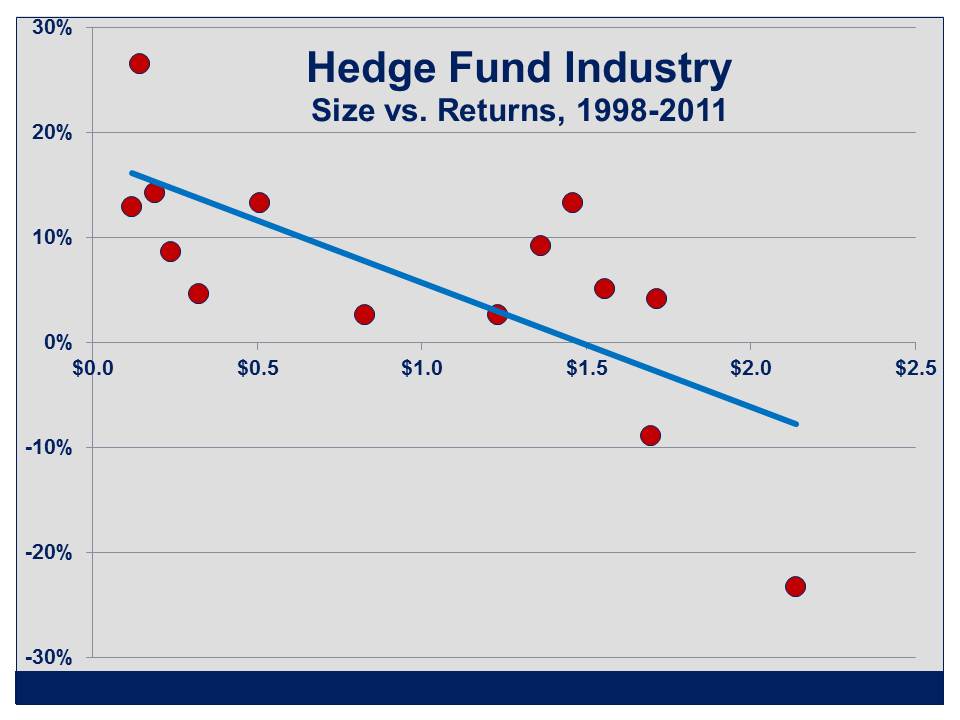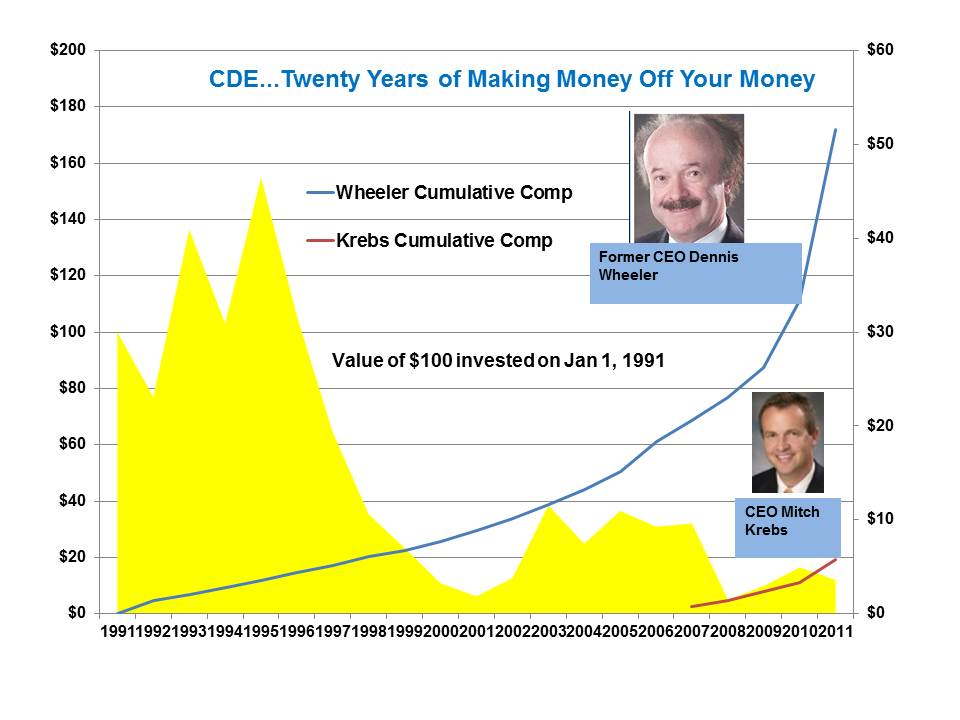In late July I had the opportunity to present the ideas in my book, The Hedge Fund Mirage, at the CFA Institute’s Financial Analysts Seminar in Chicago. Flying to Chicago for the day afforded me time to catch up on some reading, and some new ideas.
From time to time we’ve written about the Equity Risk Premium and how it makes stocks a far better investment than bonds. The earnings yield on the S&P500 (which is the inverse of its P/E) is around 7.6% (consensus earnings of $105 divided by current S&P500 level of 1,385). Ten year treasury yields are 1.5%, so the resulting 6.1% gap was last this wide in 1974 following the Yom Kippur War, OPEC oil embargo and rampant inflation. Or to put it another way, as we’ve written before, it only takes $22 invested in the S&P 500 (yielding around 1.9%) to generate the same after-tax ten year return as putting $100 in ten year treasuries (all assuming unchanged dividend yields and 4% annual dividend growth compared with a 50 year average of 5%). The remaining $78 of the $100 could be left in 0% yielding cash and the Math still works. This is how expensive is the relative safety of fixed income. To describe bonds as being for wimps would risk provoking the Market Gods to swiftly prove otherwise, so I won’t go that far. But they are for those willing to accept a guaranteed loss of real wealth after taxes and inflation.
However, the Equity Risk Premium has remained more or less historically wide for some time, and it’s not exactly a secret. Martin Brookes and Ziad Daoud of Fulcrum Asset Management, recently offered a possible explanation. In a paper titled “Disastrous Bond Yields” reported in the Financial Times, they construct a risk/return framework for investors that extends the more normal economic state of two scenarios (expanding or contracting economy) to include a third (“disaster”, a “large decline” in GDP). Such disasters were far more common prior to World War II, and the authors theorize that the subsequent 60 years of comparative serenity caused investors to undervalue the safety of government bonds in such cases, an oversight we might now conclude has been corrected. To the layman, people are scared. Or, as a retired bond trader and friend of mine observed recently, investors are not buying ten year treasuries because they think they’re a great long term investment. I won’t do the paper justice here and it’s worth reading, for the authors go on to show that at a certain tipping point of economic distress the credit risk in government bonds overwhelms their safety. Empirically, when the default probability of a country exceeds 3% its bonds and stocks start behaving far more alike as correlations flip from negative to positive. Greece, Spain, Italy and (interestingly) France have all crossed this threshold.
At the CFA event in Chicago my presentation directly followed that of Professor Robert Shiller, author, Yale professor and co-creator of the S&P/Case-Shiller Home Price Indices. Clearly my inclusion showed the organizers’ flexible standards on speaker selection. Professor Shiller spoke about his recent book, “Finance and the Good Society”, a review of which I had coincidentally just read on my flight. The book makes the case for the benefits of financial innovation to broader society, a lonely position given recent history. One novel idea was that the Federal government should borrow money by issuing securities whose coupons are directly linked to GDP. Specifically, one such bond would pay annual interest equal to one trillionth of GDP, or about $15.09, hence the name “Trills”. I thought it was a clever idea; many investors would surely find use for a security tracking nominal GDP, and while the government’s cost would be pro-cyclical (i.e. fall when the economy’s contracting) it would be less volatile than if the Treasury issued exclusively short term treasury bills and would also provide an inflation hedge to investors. Of course, Professor Shiller noted that TIPS (Treasury Inflation-Protected Securities) were first suggested about 100 years before they became reality so we shouldn’t expect to see these novel securities soon. But I thought it was an intelligent suggestion.
One new idea would be for Congress to resolve the looming “fiscal cliff” before the election, thus acknowledging the supremacy of the economy compared with their respective campaign plans. But any new idea I suggest here will be too dripping in sarcasm to be serious. Suffice it to say that, as we sit here watching the weeks tick by to November with no pre-election solution in sight, it is with a feeling of stunned amazement that we regard the oblivious disregard of Congress for the private sector. Planning for 2013 hiring and capital spending decisions takes place well before the lame duck Congress will limp back to Washington DC in mid-November. Anecdotally, companies are increasingly curbing their long-term commitments until fiscal policy becomes clearer. While we don’t try and time the markets, many companies’ quarterly earnings have shown very weak European demand across varied products and services and a cautious outlook globally. In our Deep Value Equity Strategy cash is a relatively high 10% as a few names have reached price targets we felt fairly reflected their value.
MLPs had a nice month in July following six months of zero total return. The sector had become steadily more attractive as we noted last month, and July’s results made up some lost ground. We think MLPs remain attractively priced with distribution yields still above 6%.

